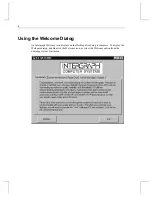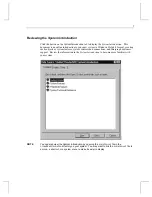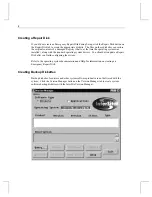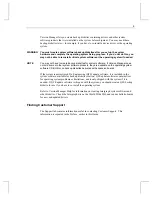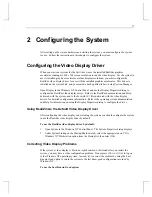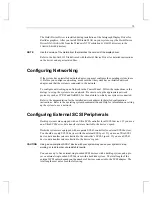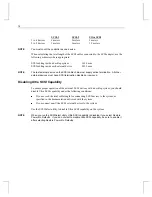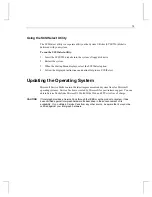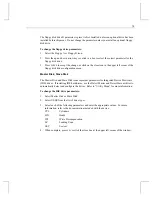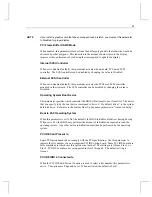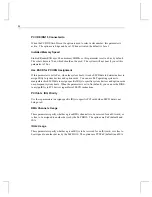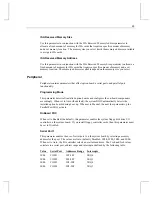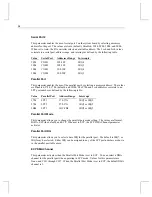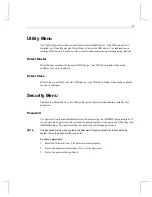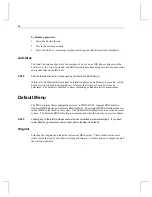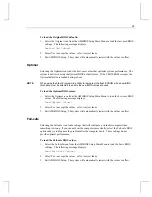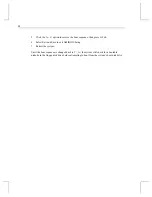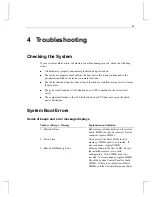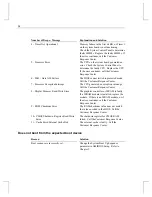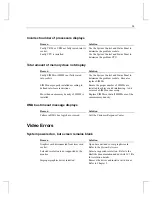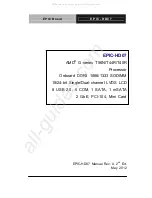
20
Advanced
Advanced allows you to change details of the system’s operation. Each parameter included in
the Advanced Setup menu is described below.
System Boot Up Sequence
This parameter specifies the device sequence for system boot up. The default is C:, A:, which
means the system attempts to boot from drive C first. If unsuccessful, it attempts to boot from
drive A. By default, C: is the system hard disk drive and A: is the floppy disk drive. Change
this parameter to A:, C: to boot the system from a diskette in the floppy disk drive. Refer also
to Operating System Boot Device parameter in “Chipset Setup.”
Above 1 MB Memory Test
When enabled, this parameter invokes the Power On Self Test (POST) memory routines on
the RAM above 1 MB. If disabled, the BIOS will check only the first 1 MB of RAM.
System Keyboard
This parameter enables or disables BIOS keyboard testing. Acceptable values are Absent and
Present. If Present (default) is selected, the BIOS tests for the keyboard when the system
boots and provides an error message if the keyboard is not present. If Absent is selected, the
BIOS does not test for the presence of a keyboard.
Typematic Rate
This parameter defines the rate at which a keystroke repeats when you press and hold down a
key. Accepted values are 15, 20, or 30 (default) characters per second.
System Boot Up Num Lock
This parameter, when set to On (default), disables the arrow keys on the numeric keypad. The
Num Lock option on the keyboard can be turned off and on while the system is operating.
Wait for ‘F1’ on Error
When set to Enabled (default), the system will display the
Press <F1> to RESUME
message if an error occurs during boot up diagnostic tests. If this setting is Disabled, any non-
fatal errors will not generate the statement, but the AMIBIOS will display the appropriate
error message.

